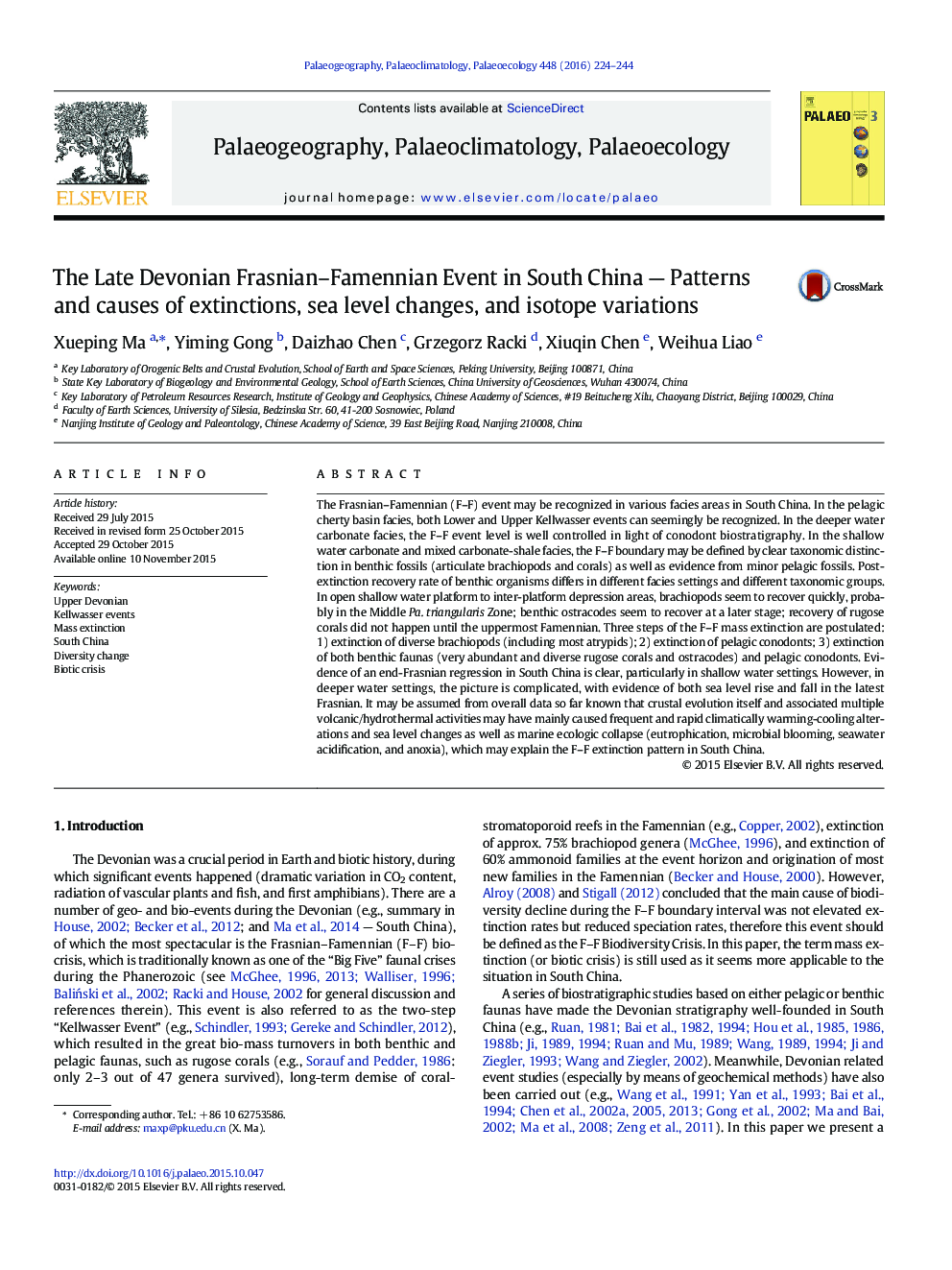| Article ID | Journal | Published Year | Pages | File Type |
|---|---|---|---|---|
| 4465851 | Palaeogeography, Palaeoclimatology, Palaeoecology | 2016 | 21 Pages |
•The Frasnian–Famennian (F–F) boundary in various facies in S. China is documented.•Diversity changes of corals and brachiopods are presented at a substage scale.•Sea level changes and isotope variations across the F–F boundary are discussed.•Patterns and causes of the F–F extinction are discussed based on combined geo-data.
The Frasnian–Famennian (F–F) event may be recognized in various facies areas in South China. In the pelagic cherty basin facies, both Lower and Upper Kellwasser events can seemingly be recognized. In the deeper water carbonate facies, the F–F event level is well controlled in light of conodont biostratigraphy. In the shallow water carbonate and mixed carbonate-shale facies, the F–F boundary may be defined by clear taxonomic distinction in benthic fossils (articulate brachiopods and corals) as well as evidence from minor pelagic fossils. Post-extinction recovery rate of benthic organisms differs in different facies settings and different taxonomic groups. In open shallow water platform to inter-platform depression areas, brachiopods seem to recover quickly, probably in the Middle Pa. triangularis Zone; benthic ostracodes seem to recover at a later stage; recovery of rugose corals did not happen until the uppermost Famennian. Three steps of the F–F mass extinction are postulated: 1) extinction of diverse brachiopods (including most atrypids); 2) extinction of pelagic conodonts; 3) extinction of both benthic faunas (very abundant and diverse rugose corals and ostracodes) and pelagic conodonts. Evidence of an end-Frasnian regression in South China is clear, particularly in shallow water settings. However, in deeper water settings, the picture is complicated, with evidence of both sea level rise and fall in the latest Frasnian. It may be assumed from overall data so far known that crustal evolution itself and associated multiple volcanic/hydrothermal activities may have mainly caused frequent and rapid climatically warming-cooling alterations and sea level changes as well as marine ecologic collapse (eutrophication, microbial blooming, seawater acidification, and anoxia), which may explain the F–F extinction pattern in South China.
